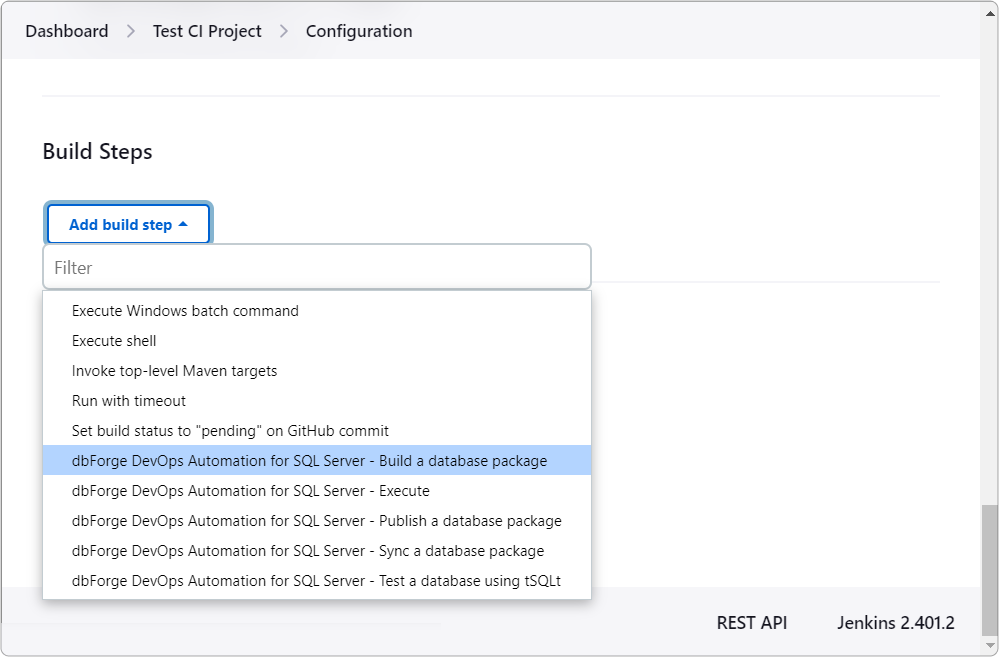The Build step
Synopsis
Builds a database on a server.
Description
The Build step involves building a database package and deploying it on a specific server. This package is typically created from a script folder containing SQL or other database-related files.
How to create the Build step
To create the Build step, click Add build step and then select the Build a database package step.

Next, in the dialog window that opens, enter the subfolder name of your Script Folder. Remember, that this subfolder should be relative to the path that you have already set above (Use custom workspace → Directory). Then, enter the package name, server name and the name of the database that you want to deploy to the server.

Customization options
- Source-controlled database
Select the location of the database folder - directly in the build VCS root or as a subfolder within the VCS root.
- Output package
Provide a unique package name that will also be used in other build steps.
- Temporary database server
Select where dbForge DevOps Automation for SQL Server will recreate and validate your database - on your local server or on the specified SQL Server.
If you choose the SQL Server option, you’ll need to provide the following information to establish a connection to the specified SQL Server instance:
-
Server name
-
Database name
-
Authentication method: select between Windows Authentication and SQL Server Authentication
-
User name and password (for SQL Server Authentication)
Advanced customization options
- Schema Compare options
Specify additional Schema Compare options.
- Schema Compare filter
Specify a path to an alternative filter file which will be used for validating the schema to override *.scflt filter file present in the input.